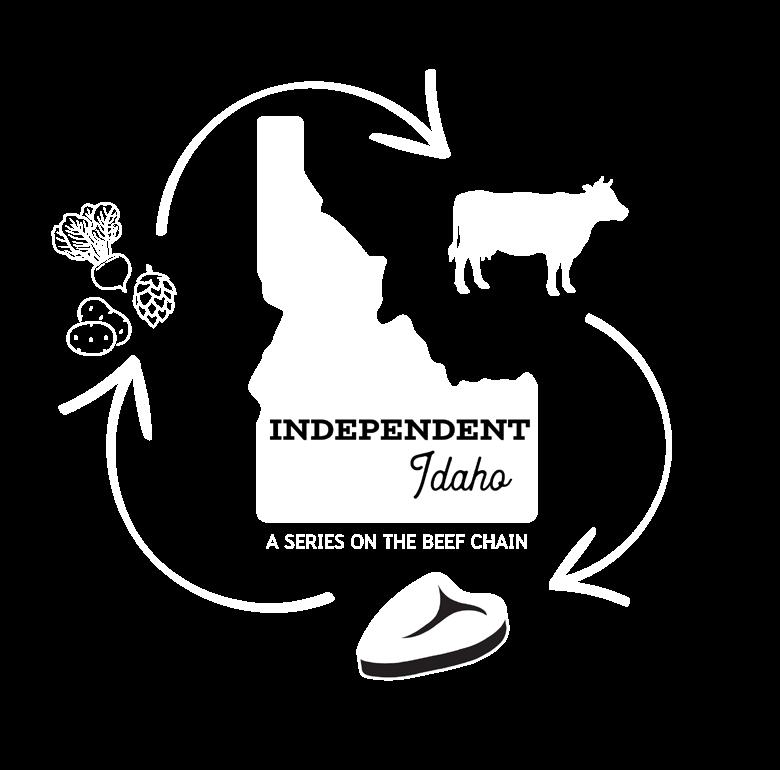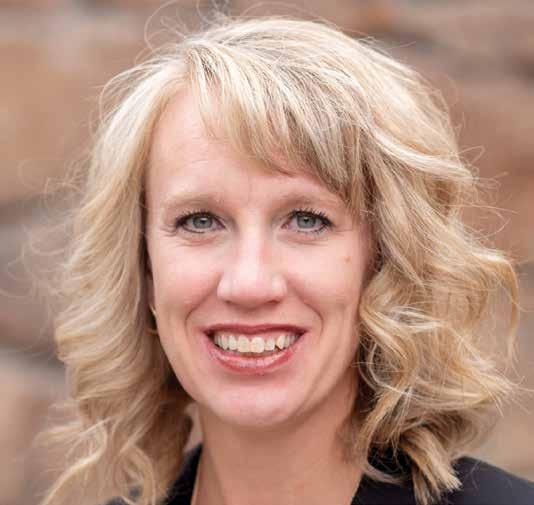
5 minute read
Message from the EVP
The thing about guts
Our state and our nation depend on a consistent, quality protein source and Idaho can provide it from the pasture to the plate.
Advertisement
The cattle feeding industry is highlighted every year in our September issue. This segment is a unique, and yet critical, part of our beef supply chain. It is the portion of our industry that joins the front half and the back half- the “guts” of the outfit if you will.
Feeders are often the portion of our industry (on the “live side”) that most frequently receives the media scrutiny contributing to high public awareness. While those ranchers utilizing the public lands are also subject to push back from the general public, feeders constantly face hurdles including new neighbors and battling false perceptions in our state as well.
As the industry messaging evolves, we try to provide the people of our country with the positive impacts of our current cattle feeding systems. Efficiency is one such benefit provided. The inputs on a per head basis to produce a burger for our population are as low as anywhere in the world. We continue to evolve and adapt to new feeds, nutrient management systems, regulations, even ever-changing neighborhoods. Feeding operations continue to be evolutionary facilities as required by public perceptions and regulatory burden on a daily basis. As I have noted in the past, cattle feeding is an art - I applaud this portion of the industry for contributing to a well uniformed end product, while working with various inputs and starting products.
While the feeder segment does this on a continued basis, I’d hope to see all producers in the industry working together to ensure we have an efficient and effective process to take our cattle from start to finish. Every regulation and requirement put on one portion of the chain adds stress to another.
Waters of The United States, Navigable Water Protection Rule (now returned to the 1986 WOTUS ruling) may not have an effect on everyone in our industry, but our feeders have had to continually evolve to make sure their operations are meeting the standards. This standard, for instance, has changed 3 times in my short time here at the ICA and will most likely see an additional change in the coming years. Just like our beef consumers want consistency, so do producers in viewing regulations. Rules and regulation related to our industry are plentiful. As producers and feeders, we can mold our management and operations to fill the void, however, if there continues to be changes and new requirements, the bending and twisting can sure wear a guy down.
It is important that we stand up and protect all the aspects of our industry. Currently on the national stage, the Cattle Market Transparency Act and Special Investigators bills are looking to place additional regulation and oversight on the industry. In theory, it may seem like a necessary item to some. As the latest version rolled out however, I quietly asked, “How far will this go down the line?” It’s my belief that the request filed to investigate the feeding operations made in April of this year demonstrates to us it could go all the way down the food chain. R-Calf USA made the request to the Department of Justice and Federal Trade Commission to investigate the consolidation of feedlots. Who’s next? The latest discussions in DC are defining small cattle producers as less than 100 head.
BY CAMERON MULRONY ICA Executive Vice President

Will Cow/Calf operations larger than 100 head be the next wave of investigations?
Now, please breathe deeply: I am not suggesting we don’t have the need to enforce anti-trust laws or restrict monopolies. However, I am cautious, as we all know that economies of scale (even on our operations) provide efficiencies that keep us in business. Some of these ideas are coming from within our industry as one segment vs. the other. We need to work together moving forward and continue to show the benefits of efficient and managed cattle production. Now, we may fight like brothers inside the walls of our own home- while we don’t have to agree, if we take the fight outside, we need to stick together for maximum impact. Be wary of those that want to jump in and “save” someone.
One example of an inhouse discussion that evolved quickly with outside input, is the original 50/14 conversations. The current Congress had discussion regarding the 50/14 idea, yet along came a proposal for a 50/7 (50% of cattle for a processor would have to be purchased on negotiated trade and delivered within 7 days) How would a proposal such as 50/7 affect the feeding industry in our nation? How many deliveries would be possible? Could we get trucks lined up? The concept on the front end that contributed to these ideas came from our inhouse scuffles, but those looking to “help” quickly averted toward their goal of changing livestock production from the ground up.
The moral of this story is that we need to protect every aspect of our industry. As our state’s population changes, remember to protect our right to farm here in Idaho. Protect our feed yards, testify on their behalf, highlight the positives our communities and our state value with a functioning feeding industry. Some may define the “heart and soul” of the cattle industry as the cow/calf producer, but we had better have a healthy set of “guts” or our body will not function.

RAINFALL INSURANCE
Insure your investment. Weather or not.
Worried about rainfall? Pasture, Rangeland, Forage (PRF) insurance helps you manage losses due to lack of rainfall on hay and grazing ground.
Identify the right timing and best coverage scenarios with a free PRF quote that includes access to decades of historic rainfall data.
Contact a Northwest FCS insurance agent to learn more.





